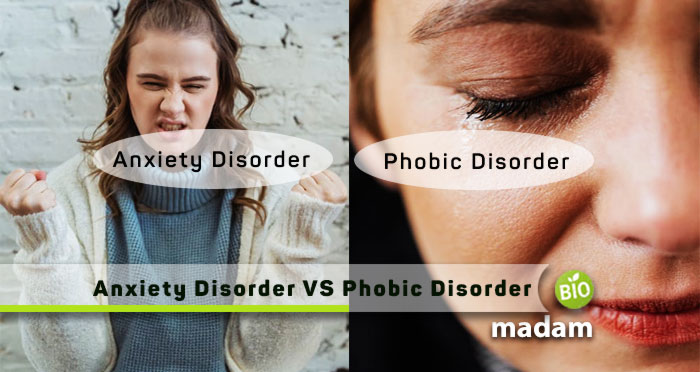Anxious people feel stressed when facing situations like taking a test, going for a job interview, or getting married. When a person is anxious, and under stress, he undergoes shaking and trembling, faster heartbeat, palpitations, etc. As a result, some people become preoccupied with fear and worry. These symptoms of anxiety continuity lead the victims to anxiety disorder.
Anxiety can manifest in the form of panic disorder, phobia, or obsessive-compulsive disorder. If a chronic anxiety disorder is not treated timely, it may jeopardize an individual’s physical, mental, and emotional health.
It results in the risk of alcohol/ drug abuse and family problems and becomes a significant cause of depression, and in some cases, the chance of suicide increases.
What is Generalized Anxiety Disorder GAD?
People suffering from GAD worry uncontrollably about common occurrences and situations. It is different from normal feelings of anxiousness.
For example, you may feel for your finances once a month, but a person with GAD may worry several times in a day about his finances.
Sometimes they are unable to explain why they are worried. This unrealistic feeling of worry can interfere with relationships and daily activities.
What is Phobic Disorder?

Unlike generalized anxiety disorder, a phobia is an excessive and irrational fear reaction usually connected to something specific. When a person encounters the source of his fear, he may feel a deep sense of dread.
People’s fear can interfere with work, school, and personal relationships. These people often realize that their fear is irrational, but they cannot do anything about it without any psychological intervention.
Difference between GAD and Phobic Disorder
There are differences between these two types of anxiety disorders.
Symptoms of Generalized Anxiety Disorder and Phobic Disorder Difference
Generalized Anxiety Disorder
- Difficulty in concentration doing any task
- Restless sleep
- Feeling of irritability
- Often feel exhausted
- Tension in muscles of back and neck
- Diarrhea and Stomachaches
- Palms often get sweat
- Fast heartbeat
- Neurological symptoms, such as a feeling of numbness in different parts of the body
Phobic Disorder
The most common and disabling features of a panic attack include:
- Racing or pounding heart
- Shortness of breath or chest congestion
- Pressured speech or inability to speak
- Nausea tic
- Overwhelmed with a feeling of anxiety
- Intense feeling to get escape from the particular situation
Causes and Risk Factors
Generalized Anxiety Disorder
- A generalized anxiety disorder may have the following causes and risk factors:
- There may be a family history of anxiety
- Prolonged family illness or stressful personal incident
- Excessive use of caffeine or drugs
- Childhood abuse or sexual abuse
- Gender plays a vital role in the prevalence of generalized anxiety disorder. According to research, women are twice likely as men to experience GAD.
Phobic Disorder
There are several causes and risk factors for the phobic disorder
- Genetic and environmental factors
- Family history
- Distressing events
- Exposure to high or confined places, any accident, or animal or insect bite
- People with chronic illness
- Traumatic brain injury or substance abuse
- People with a phobia can pass the reality test
- Gender, age, and socioeconomic status seem to be a risk factor
- Women are more likely to develop an animal phobia, while children and people with low socioeconomic status may have social phobia
Treatment Options
Treatment for phobias and generalized anxiety disorder can involve therapeutic techniques, medications, and changes in lifestyle, like adding a morning walk or a combination of these.
What are the Treatment Options for Generalized Anxiety Disorder?

The following techniques are used to treat GAD;
Cognitive Behavioral Therapy, CBT
It is considered a first-line treatment option for anxiety and has provided long-term anxiety relief. In this technique, a person with anxiety has to have regular meetings to talk with a mental health professional. The goal of these therapy sessions is to recognize and change your thinking and behavior.
A therapist helps to learn techniques to calm you when upsetting thoughts arise.
Medication
CAUTION: Anxiety medication information is solely for informational purposes. We strongly recommend consulting a Doctor, Psychiatrist, or Psychologist. Using any medication without a prescription can harm mental and physical health.
A doctor recommends two types of medication plans. One is short-term, and the other is long-term
In short-term medication, the doctor recommends medications to relax some of the physical signs or symptoms of anxiety. Common anti-anxiety medicines are:
- Alprazolam (Xanax)
- Clonazepam (Klonopin)
- Lorazepam (Ativan)
Anti-anxiety drugs have a high risk of dependence and abuse. So these drugs are not meant to be taken for extended periods.
Whereas anti-depressants work well for long-term treatment, such as
- Buspirone (Buspar)
- Citalopram (Celexa)
- Escitalopram (Lexapro)
- Fluoxetine (Prozac, Prozac Weekly, Sarafem)
- Fluvoxamine (Luvox, Luvox CR)
- Paroxetine (Paxil, Paxil CR, Pexeva)
- Sertraline (Zoloft)
- Venlafaxine (Effexor XR)
- Desvenlafaxine (Pristiq)
- Duloxetine (Cymbalta)
Anti-depressants have side effects, such as dry mouth, nausea, diarrhea, or increased suicidal thoughts. So it is imperative to stay in close contact with your prescriber and report any mood or thought changes that worry you.
Work On Lifestyle to Ease Symptoms of GAD
- By changing and adopting new lifestyle habits, one can ease troublesome physical symptoms of anxiety.
- A proper healthy diet and proper sleep are a must for a healthy life
- Yoga and meditation calm muscles and relax the body
- Avoid intake of stimulants; such as caffeine or over-the-counter medicines
- Talk with your family and trusted friends about your issues
What are the Treatment Options fsor Phobic Disorder?

There are two treatment options for the phobic disorder
- Cognitive behavioral therapy (CBT)
- Medications
Cognitive Behavioral Therapy (CBT)
It is the most used psychological intervention to treat phobias. It involves systematic desensitization. In this technique, the therapist exposes the source of the fear to the person in a controlled setting.
Now, the Virtual Reality Technique is also used in this therapy. This therapy aims to change negative thoughts, beliefs, and adverse reactions to phobic situations.
Medication
Doctors recommend medicine to calm the emotional and physical reactions of fear. For this purpose, they recommend anti-depressants and anti-anxiety medicines.
Often a combination of these two techniques is the most helpful.
Recommendations
If you think that you or your loved ones are suffering from a specific phobia or GAD, seek mental health professionals’ help to receive a proper diagnosis and support.

Hi, my name is Eva. I am currently practicing as a clinical social worker, that being my childhood desire. As a licensed therapist holding MPhil in Clinical Psychology, I am now on biomadam to provide the natives with the best family advice! Do you have any questions? See you in the comment section.

